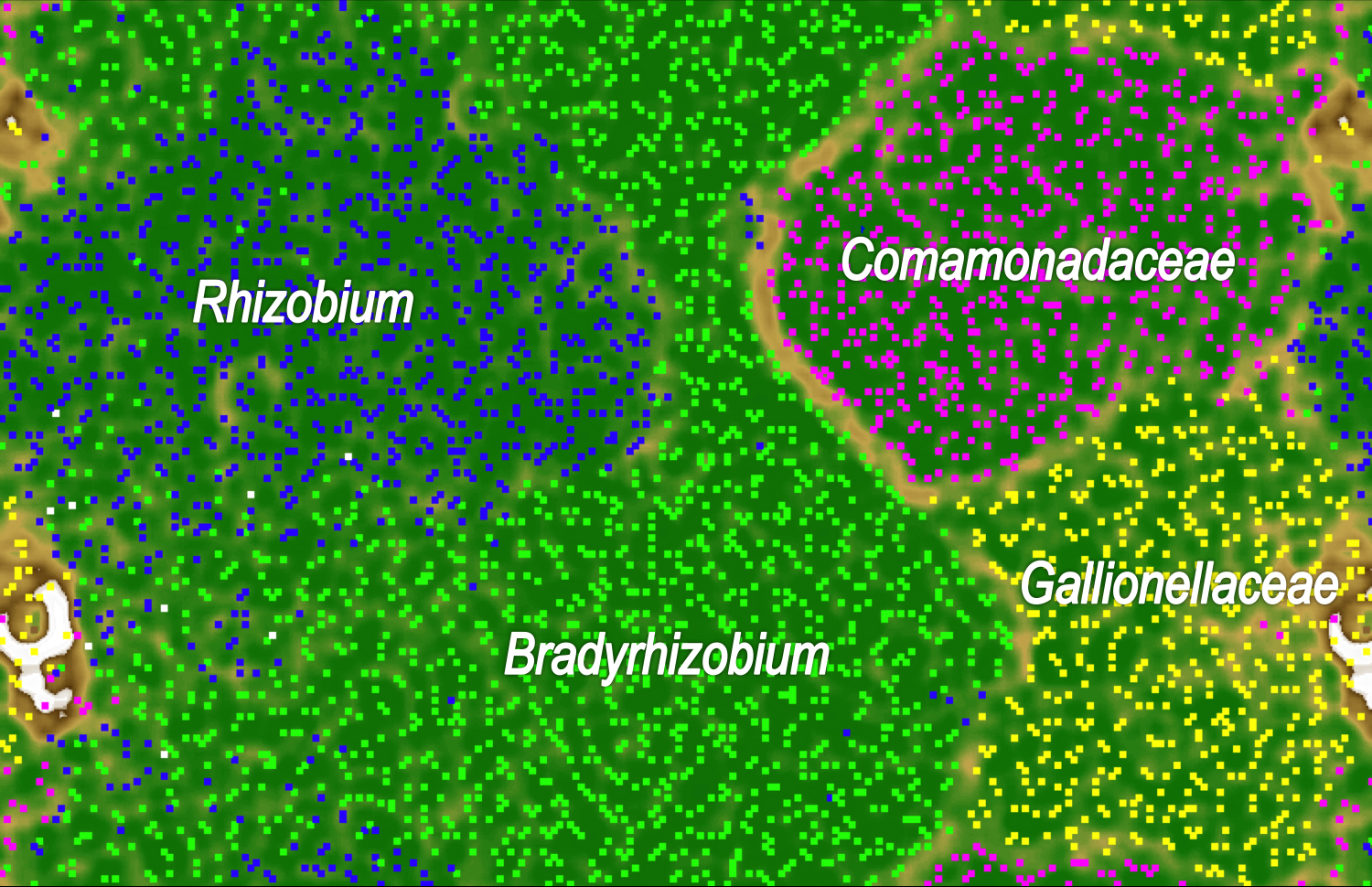-
New Insight into Microbial Communities in Anoxic Sediments
May 24, 2016 / Written by: Aaron Gronstal
Scanning electron micrographs of anaerobic Fe(II)-oxidizing cultures. From: Schadler et al. (2009) Formation of Cell-Iron-Mineral Aggregates by Phototrophic and Nitrate-Reducing Anaerobic Fe(II)-Oxidizing Bacteria, Geomicrobiology Journal.A new study provides insight into a well-recognized chemolithotrophic pathway that can be used by microorganisms inhabiting anoxic sediments. Researchers used an enrichment culture of chemolithoautotrophic organisms from freshwater sediments (dubbed Culture KS) as a model system to study the pathway: nitrate-dependent ferrous iron [Fe(II)] oxidation (NDFO).
Previous efforts to isolate the organism responsible for the oxidation of iron [Fe(II)] in Culture KS had proven unsuccessful. In the new study, researchers used metagenomic analysis to better understand the roles of different bacteria in Culture KS. Using this method, they were able to identify the primary Fe(II)-oxidizer as a species in the family Gallionellaceae and to obtain a near-complete genome from the organism. In addition, draft genomes from other community members were acquired.

An emergent self-organizing map (ESOM) calculated using tetranucleotide frequencies of contigs in the metagenome.The team then studied these genomes and identified genes involved in electron transfer pathways. In doing so, they were able to map out interactions between different species of microorganisms in Culture KS. The results show that the metabolisms of different species in the culture are interdependent, and these organisms cooperate to successfully achieve NDFO.
The iron oxidation mechanisms and microbial interactions revealed by this study help to inform our understanding of iron-based chemolithoautotrophic microbial pathways on Earth and how they might be operative on other iron-rich rocky planets.
The paper, “Metagenomic analyses of the autotrophic Fe(II)-oxidizing, nitrate-reducing enrichment Culture KS,” was published in the journal Applied Environmental Microbiology. The research was supported by the NASA Astrobiology Institute element of the NASA Astrobiology Program.
Source: [Applied Environmental Microbiology]
- The NASA Astrobiology Institute Concludes Its 20-year Tenure
- Global Geomorphologic Map of Titan
- Molecular Cousins Discovered on Titan
- Interdisciplinary Consortia for Astrobiology Research (ICAR)
- The NASA Astrobiology Science Forum Talks Now on YouTube
- The NASA Astrobiology Science Forum: The Origin, Evolution, Distribution and Future of Astrobiology
- Alternative Earths
- Drilling for Rock-Powered Life
- Imagining a Living Universe
- Workshops Without Walls: Astrovirology